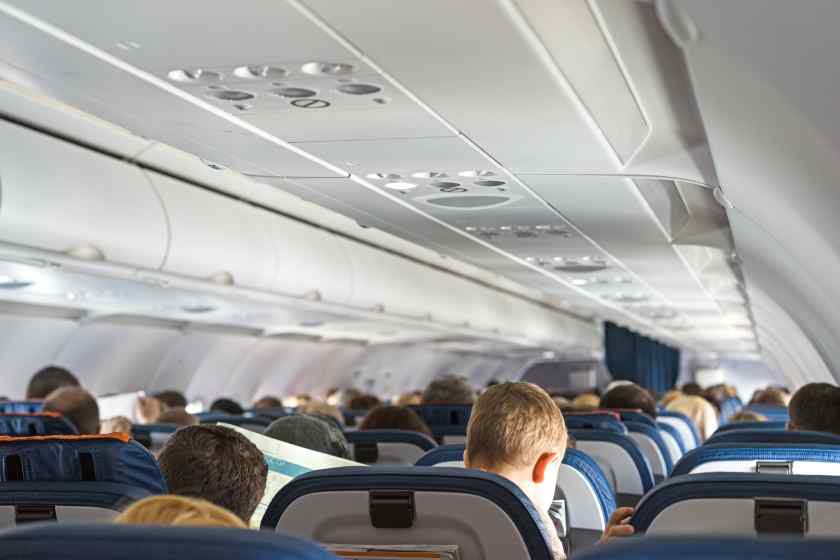Supreme Court Declines to Review American Airlines-JetBlue Alliance Case Know More - Travel And Tour World
Tuesday, July 1, 2025

The U.S. Supreme Court has decided not to review the case surrounding the controversial breakup of the American Airlines and JetBlue Northeast Alliance. Originally, the Department of Justice (DOJ) sued to end the partnership, claiming it restricted competition in the already-concentrated New York market. The alliance, which was launched in 2021, aimed to give both airlines a competitive edge against rivals Delta and United. But with the Supreme Court’s refusal to intervene, the DOJ’s victory stands, and both airlines have since moved on—JetBlue with a new alliance, and American continuing to battle in the competitive skies.
The Northeast Alliance between American Airlines and JetBlue was initially seen as a clever move to enhance both airlines’ presence in the competitive New York market. With Delta Air Lines firmly in control at JFK Airport and United operating a strong hub at Newark, the two airlines saw the alliance as a way to strengthen their position.
JetBlue, with its established presence at JFK, and American, with its global network, had the potential to offer travelers a stronger alternative to Delta’s dominance. The partnership allowed the airlines to share resources like gates, slots, and flight routes, which was expected to lead to increased competition and better service for passengers. However, regulators had a different view, arguing that this collaboration would actually reduce competition and harm consumers.
The Department of Justice’s lawsuit to break up the alliance was rooted in concerns about the concentration of power in the New York market. The DOJ argued that, far from boosting competition, the deal would likely harm consumers by reducing the options available in one of the country’s busiest markets.
Although American Airlines and JetBlue strongly disagreed with the DOJ’s assessment, claiming that the partnership was beneficial to both airlines and their customers, the legal battle ultimately led to the alliance’s dissolution. When American Airlines appealed the decision to the Supreme Court, hoping to reverse the lower court’s ruling, the Court declined to take up the case, leaving the DOJ’s victory intact.
For JetBlue, the end of its partnership with American Airlines marked the beginning of a more challenging chapter. The airline, which had already attempted to merge with Spirit Airlines in a bid to become a stronger low-cost competitor, has faced increasing pressure from competitors like Delta and United.
However, JetBlue has not given up on partnerships entirely. In 2025, it announced a new collaboration with United Airlines, named “Blue Sky.” This partnership seeks to offer reciprocal benefits to elite travelers, allowing passengers to match status across both airlines. United will also return to New York JFK, while JetBlue will have access to flight timings at Newark. This deal is seen as a strategic move to bolster JetBlue’s position in the highly competitive market while helping United challenge Delta’s stronghold at JFK.
Unlike the Northeast Alliance with American Airlines, the new Blue Sky partnership between JetBlue and United avoids some of the regulatory pitfalls. Notably, there are no codeshares involved in this agreement, which was a key issue in the original JetBlue-American deal. By steering clear of codeshare agreements, JetBlue and United are attempting to keep the deal in line with antitrust regulations and avoid the issues that led to the dissolution of their previous collaboration.
However, the deal still raises concerns, particularly from Spirit Airlines, which has warned that the partnership could still limit competition, especially with United gaining access to restricted gates and slots at JFK. As both carriers continue to fight for dominance in New York, this deal may be closely scrutinized by regulators going forward.
While JetBlue navigates its new partnership with United, American Airlines faces its own challenges. The airline, which has seen strong performance in some markets, continues to lag behind its peers in key areas. American’s post-alliance strategy involves strengthening its existing partnerships and focusing on domestic and international growth. However, without the support of JetBlue’s network, American is left to compete against giants like Delta and United, which continue to hold significant advantages in markets like New York.
The battle between American Airlines, JetBlue, United, and Delta is far from over. Each airline is adapting to the evolving competitive landscape in different ways. For American Airlines, this means strengthening internal efficiencies and pursuing new growth opportunities. For JetBlue, it’s about leveraging partnerships to gain an edge against its larger competitors. United’s role in the Blue Sky partnership is also significant, as it works to solidify its position in New York and challenge Delta’s dominance.
Ultimately, the fate of these airlines will depend on how they navigate regulatory hurdles, manage their partnerships, and respond to shifting market demands. The fallout from the dissolution of the Northeast Alliance is just one chapter in a much larger story, and the coming years will be critical for all involved.
«Enjoyed this post? Never miss out on future posts by following us»










